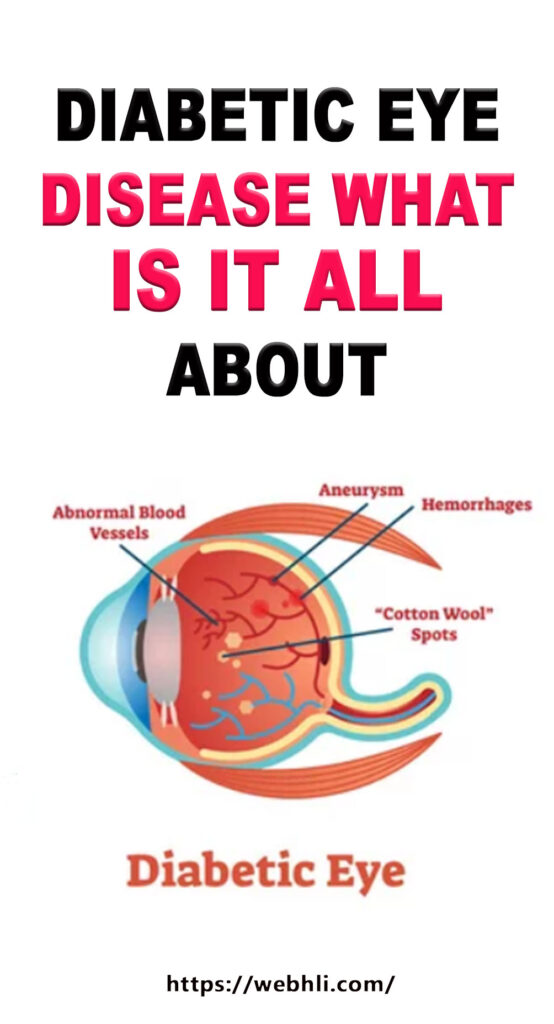
Diabetic eye disease is referred to as a disease of the small blood vessels of the retina of the eye in people with diabetes. It is a term that covers a range of eye problems that when left untreated can cause loss of vision and even blindness.
Diabetes Mellitus
In order to understand the eye problems brought by diabetes, an understanding of the root of its cause is a must. Diabetes mellitus is considered as one of the leading causes of irreversible blindness in the world. In the United States alone, it is the most common cause of blindness in people whose age is below 65 years old.
Diabetes is a disease in which your blood glucose, or sugar, levels are elevated. You get glucose from the foods you eat. The hormone insulin is the one that helps glucose get into your cells to provide them energy. However, persons with diabetes do not make insulin or do not produce or use insulin well. A lack of insulin in the body can cause the glucose to stay in the blood causing serious problems including blurring of the vision and severe permanent loss of vision. Diabetes mellitus also increases the risk of developing cataracts and glaucoma.
Check out these related articles, too:
Control Your Diabetes Better With These Helpful Tips
Gastroparesis - A Challenge to Control
Blood Sugar Control and Diet - A Plan to Reverse Diabetes
Diabetes Natural Home Remedies – Worth a Try?
Can Magnesium Prevent Diabetes?
Zinc Shown to Promote Insulin Production In Diabetics
Prevent Side Effects From Diabetes Drugs
Why You Should Stop Taking Drugs for Your Diabetes
What Does It Mean To “Reverse Diabetes?”
Diabetic Eye Disease
Severe diabetic eye disease most frequently develops in people who have diabetes mellitus for many years already and who have little or poor management of their blood sugars over that extent of time. But there are some that may not even realize they have had diabetes mellitus for several years until they start to come across problems with their eyes or vision.
Causes
Because of high blood sugar and other abnormalities in metabolism, diabetes mellitus may cause damage to the blood vessels in the body. This damage leads to poor circulation of the blood to different parts of the body. And as you know, the role of the blood is to transport oxygen and other nutrients. But if there is poor circulation, the oxygen delivered to tissues in various parts of the body is decreased causing for those tissues to be damaged later on.
The Retina
The retina is the major part of the eye affected by diabetes mellitus. It is the light-sensitive tissue found at the back of the eye and plays an important role of letting you see clearly. If it is swollen, wrinkled or otherwise anatomically impaired, the vision in that eye will be hazy or blurry. The alteration in vision will vary from marginal to severe and can be temporary or permanent depending on the type, location, and extent of damage in the retina.
The most common problem is diabetic retinopathy, a leading cause of blindness among American adults. Diabetic retinopathy usually affects both eyes. More often than not, people who have diabetic retinopathy don't observe changes in their vision during the early stages of the disease. But as it progresses, diabetic retinopathy usually causes vision loss that in many cases cannot be reverse anymore.
Other eye problems include cataract which is a cloud over the lens of the eye and glaucoma which occurs when pressure is formed in the eye causing damage in the main nerve.
Preventing Eye Problems With Diabetes
If you have diabetes, annual eye exams must be done as this is particularly important. It can help determine a problem early on when it is more easily treated. It can also prevent further complications such as vision loss. Control of blood sugar and blood pressure are also equally important in preventing eye problems if you have diabetes.
Good Energy Food for Diabetics
10 Simple Food Concepts Every Person Living With Diabetes Should Know
Making Cheesecake For Diabetics
Enjoy the Taste and Benefits of Diabetic Foods
Will The Mulberry Leaf Help Your Diabetes?
5 DIABETIC FRIENDLY SALADS Some Tasty
DIABETIC LEMON COCONUT COOKIES Some Tasty
50 Healthy Diabetic Recipes That Are The Best
Aside from surgical methods, diabetic eye disease [http://boosteyesight.com/eye-problems-in-type-2-diabetic-adults/] can be intervened naturally. There are some eye exercises to improve vision naturally [http://boosteyesight.com/eye-exercises-to-improve-vision-naturally/]. If you want to learn more of these eye exercises, you can check out boosteyesight.com for more information.
Article Source: http://EzineArticles.com/7730302

 Protected by Patchstack
Protected by Patchstack